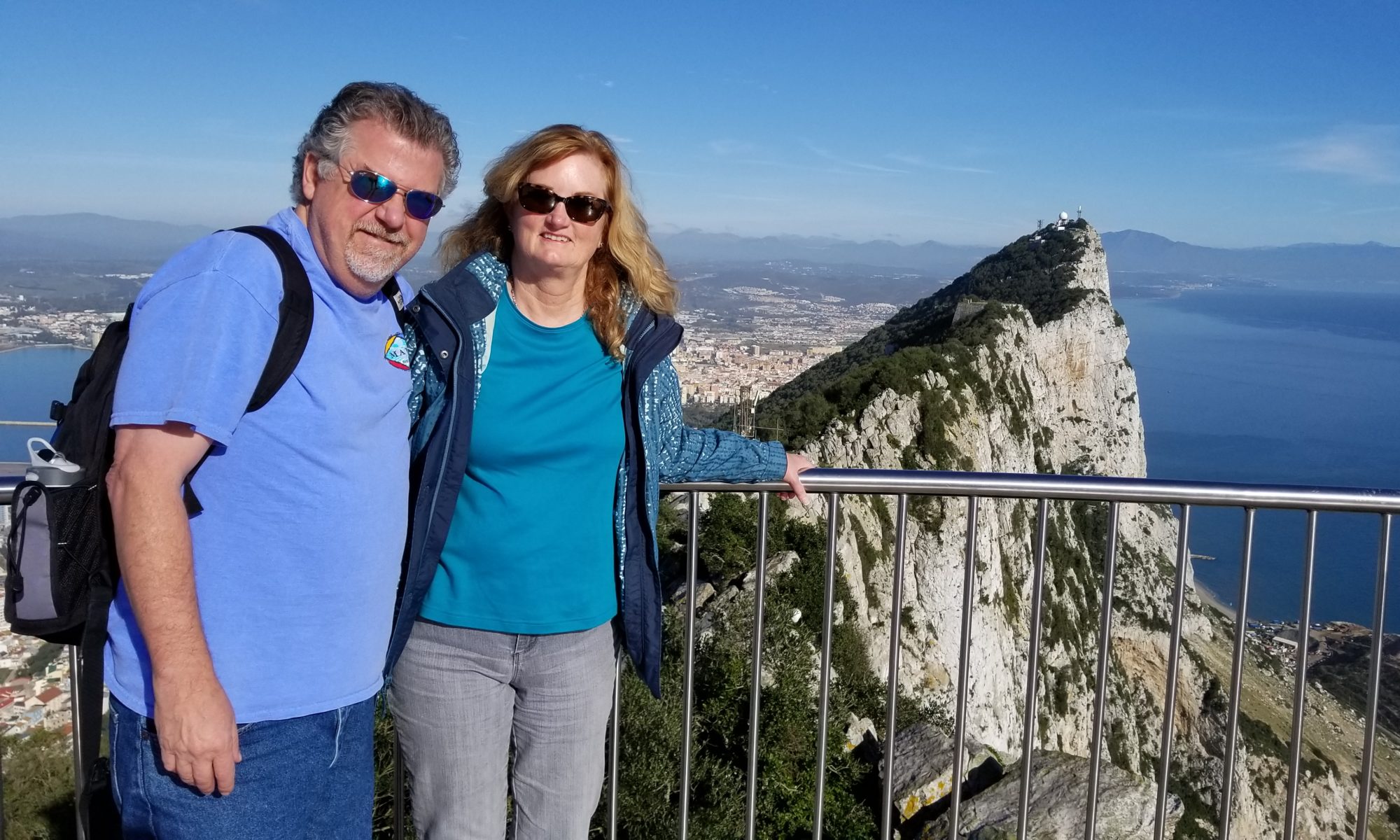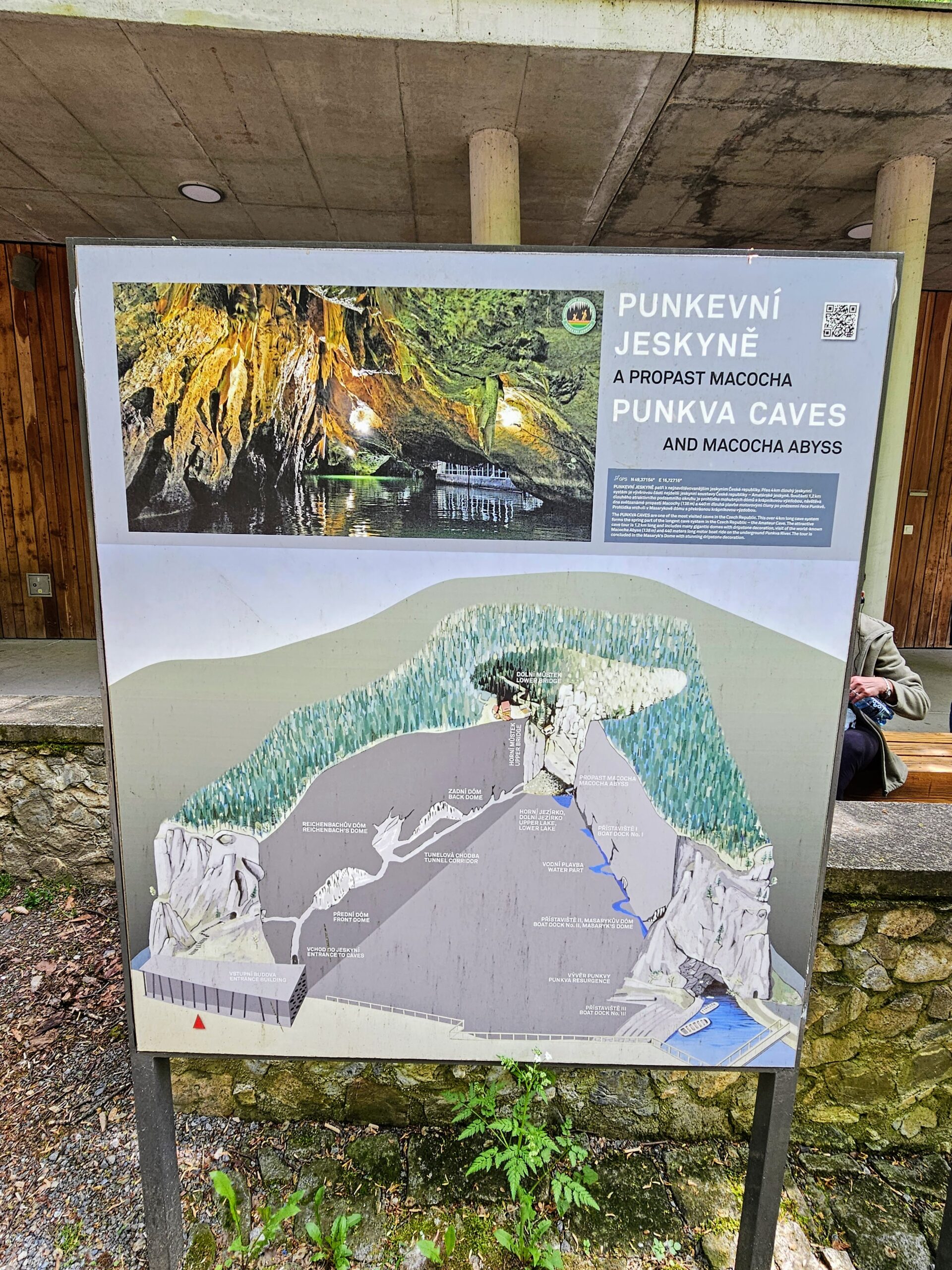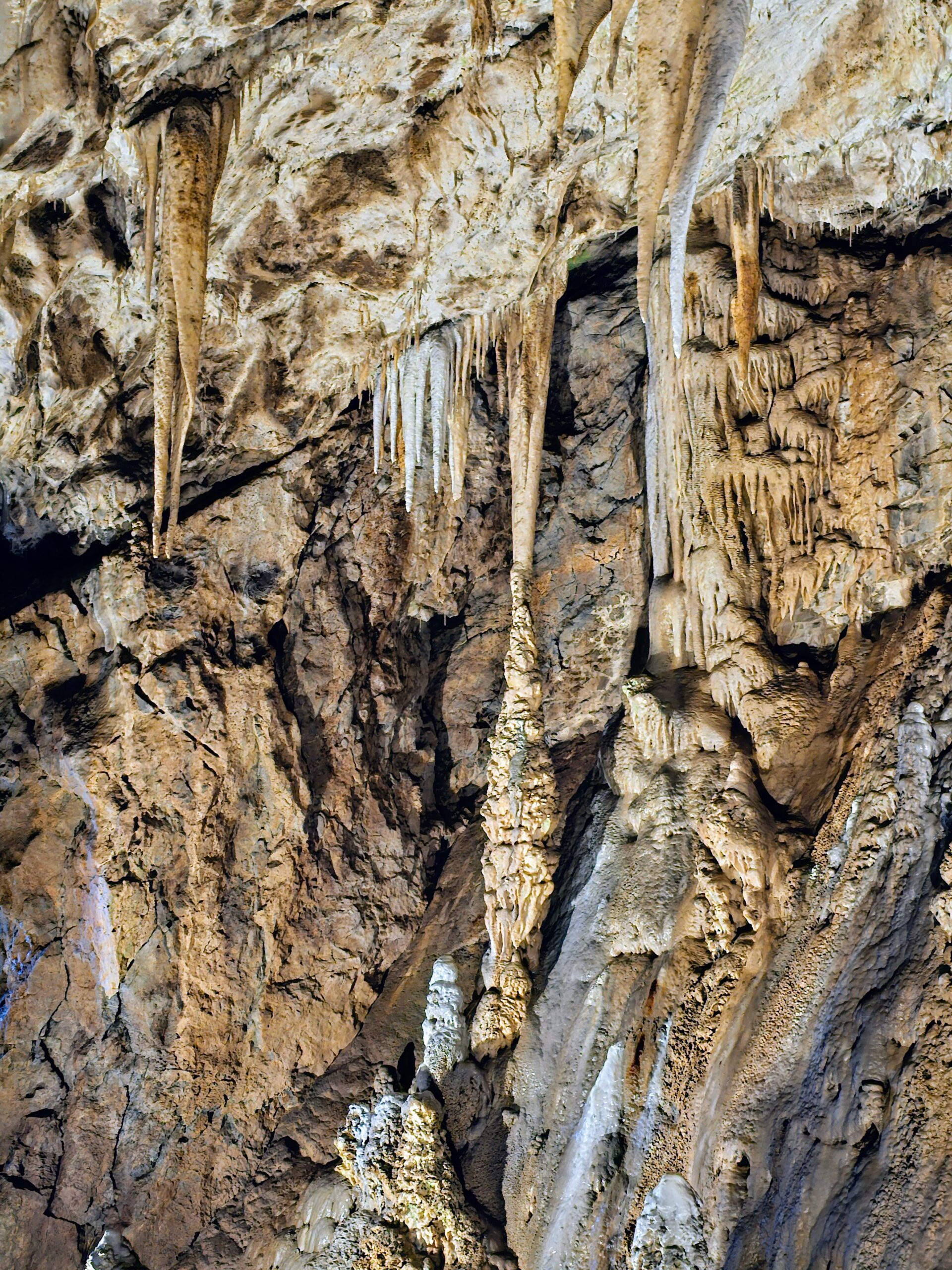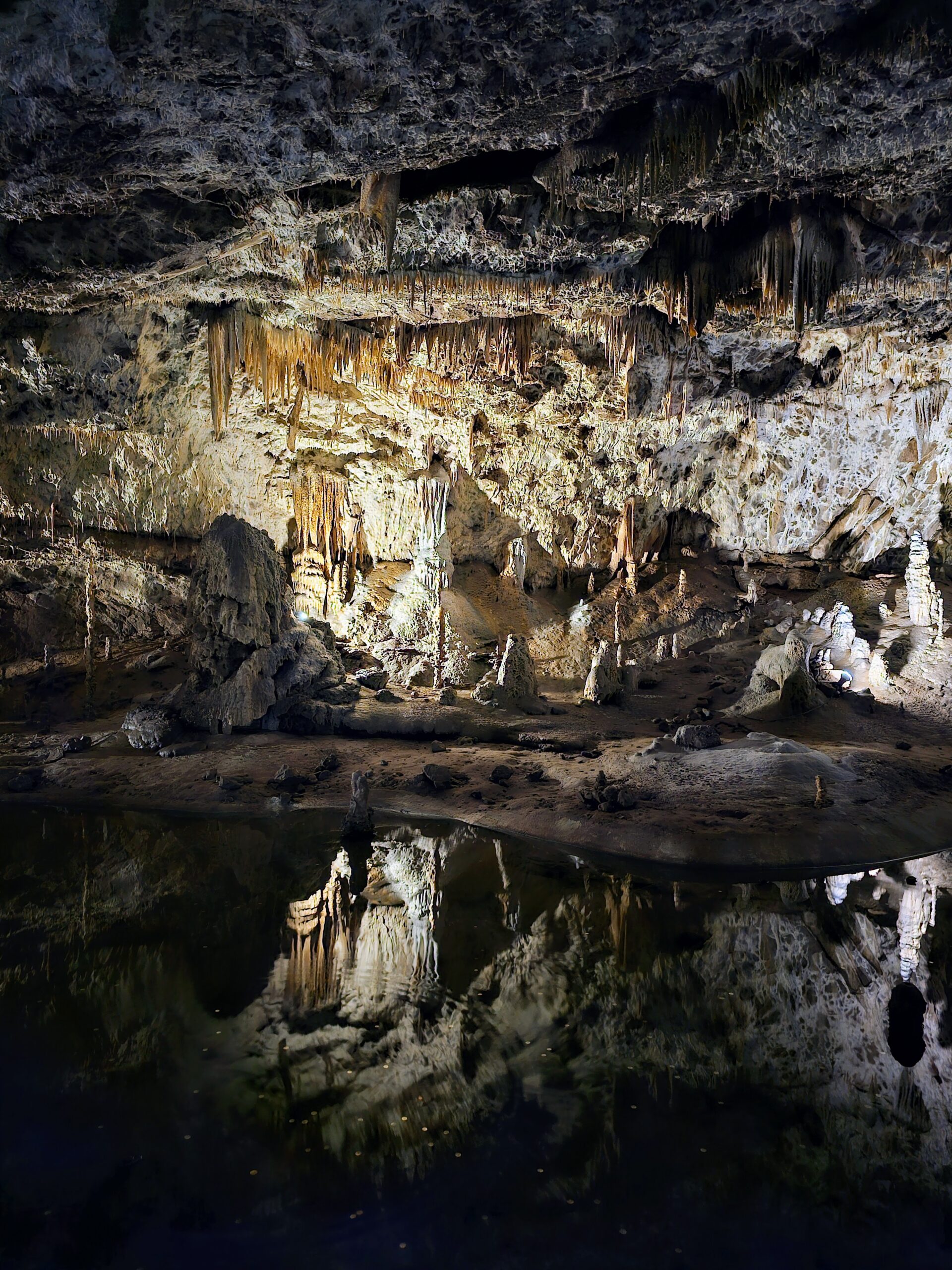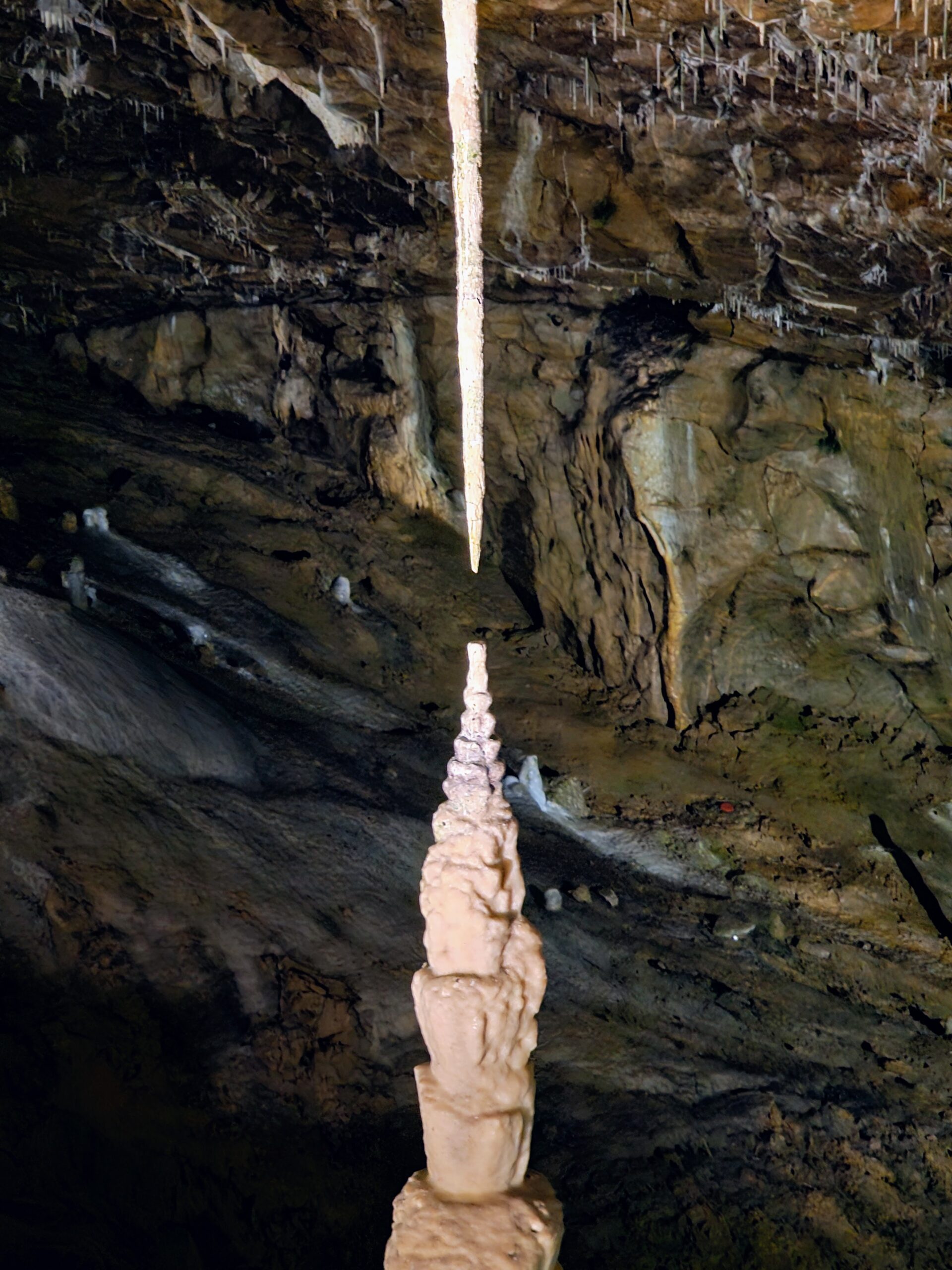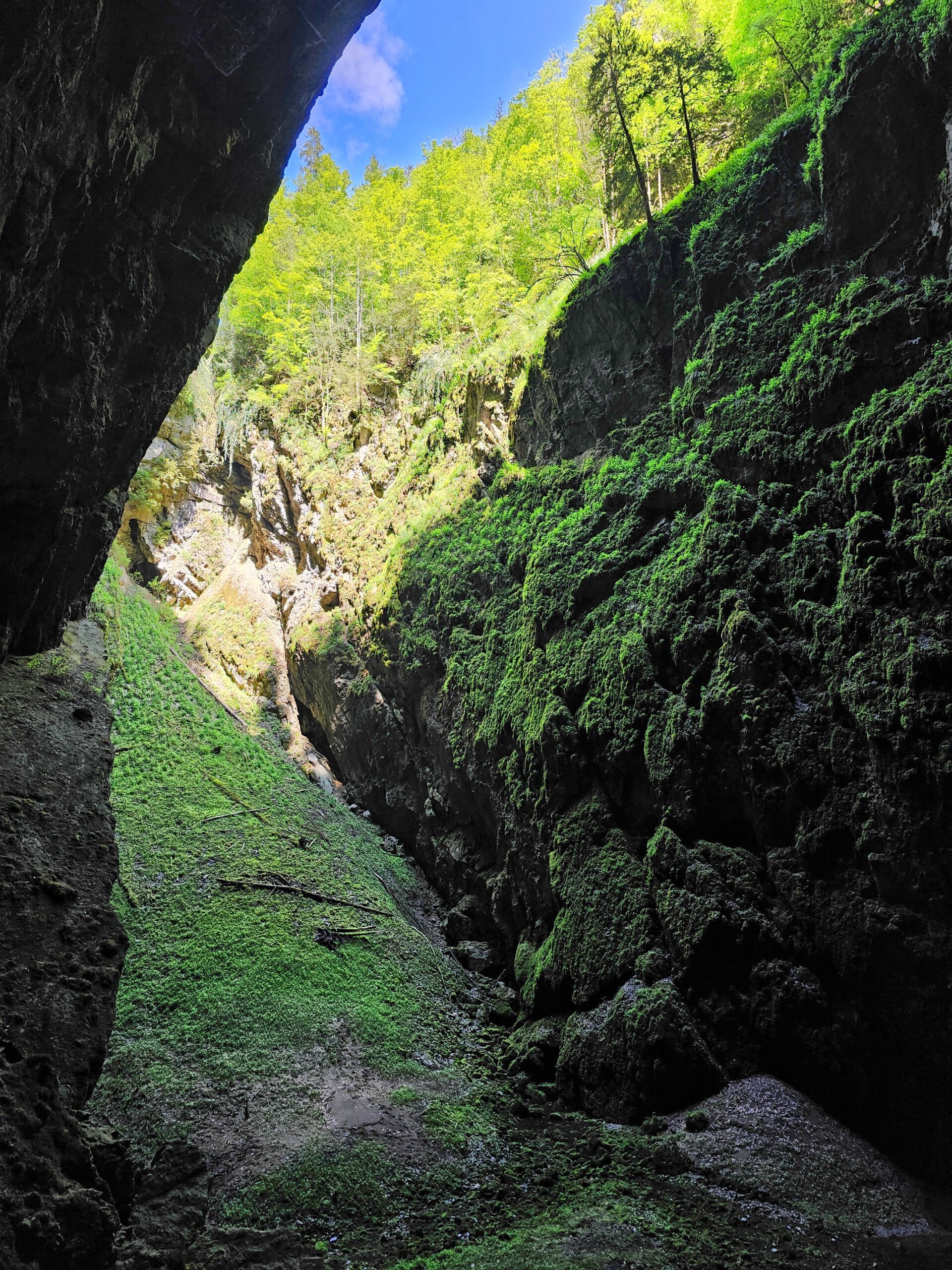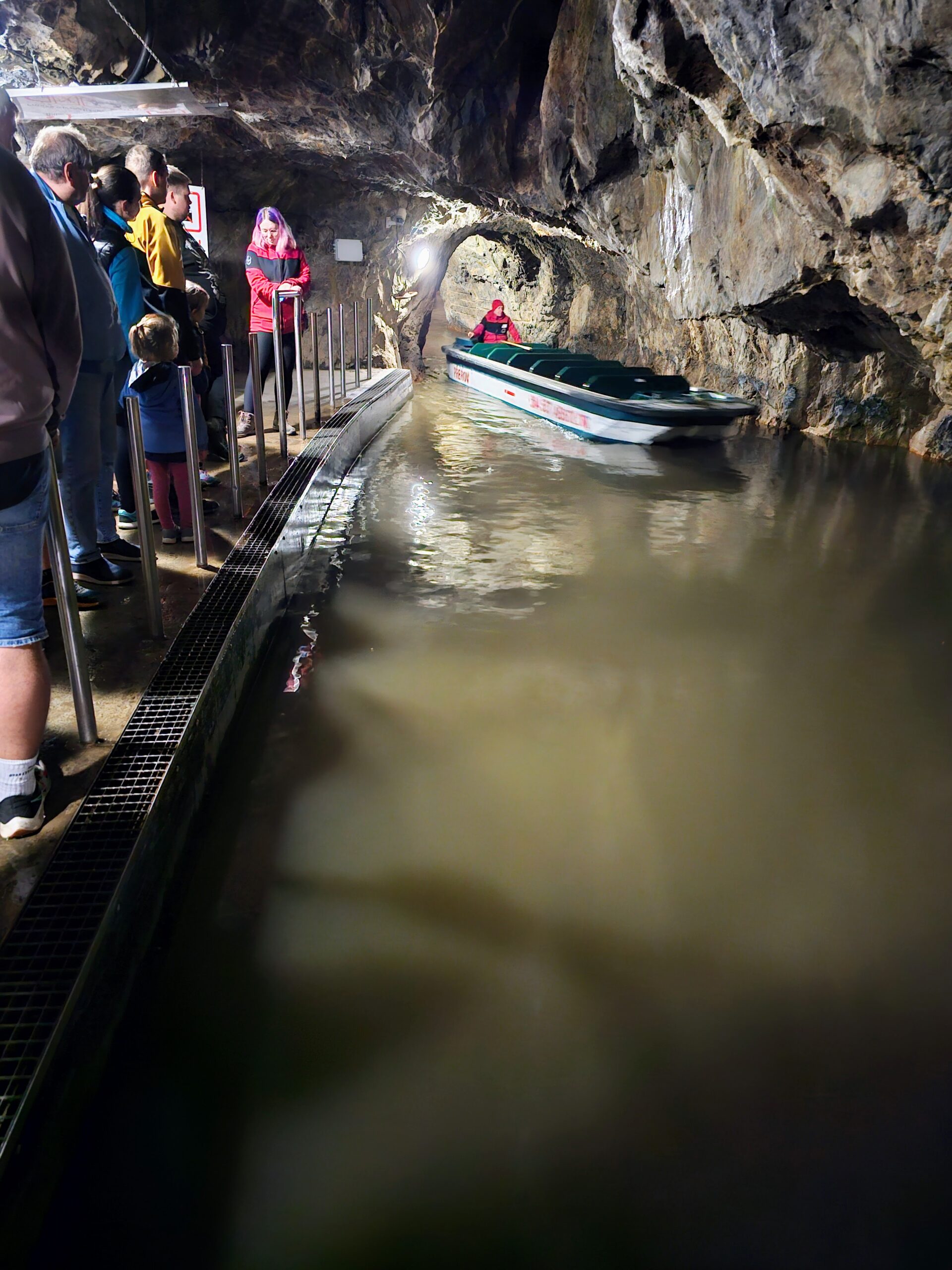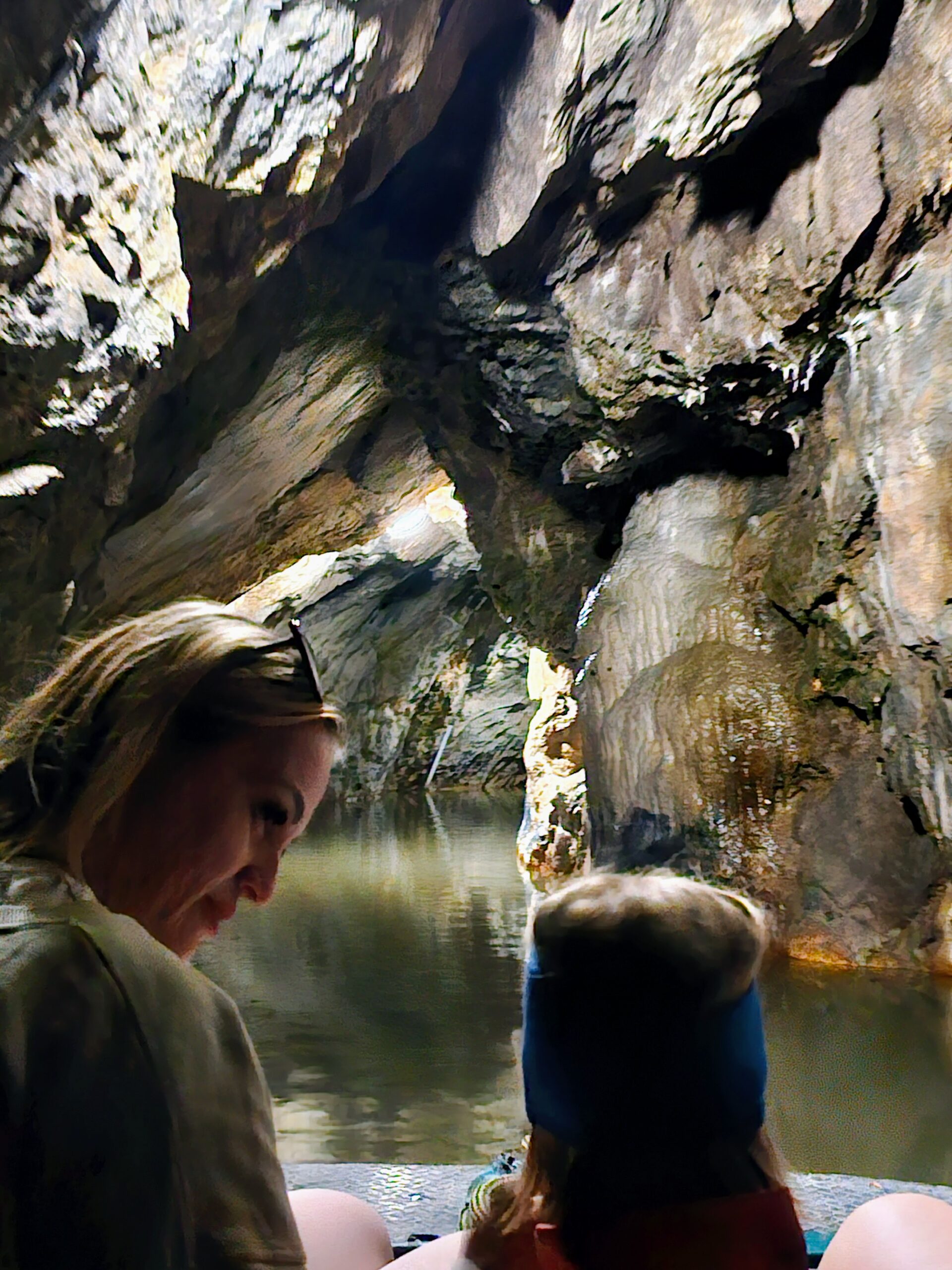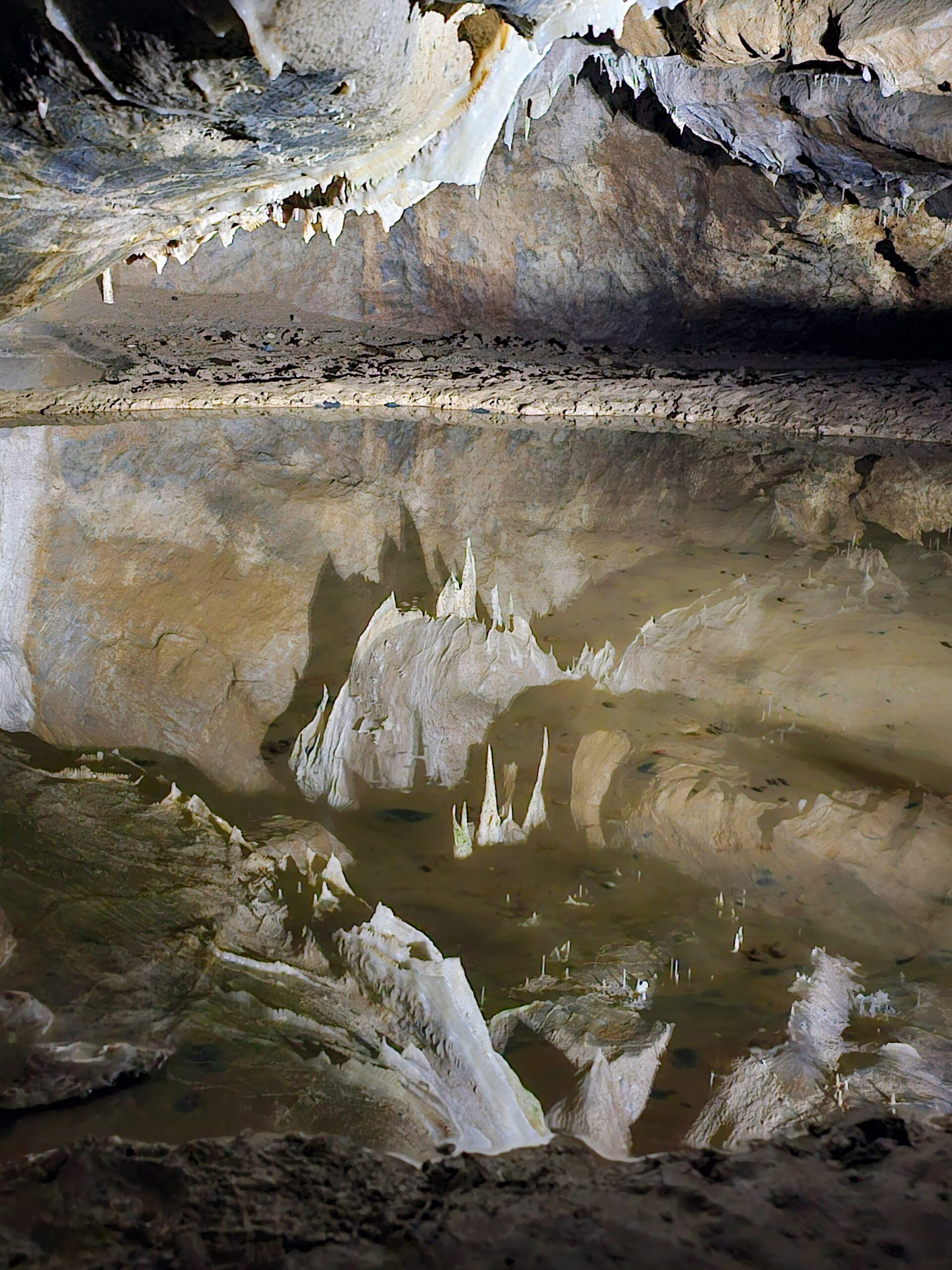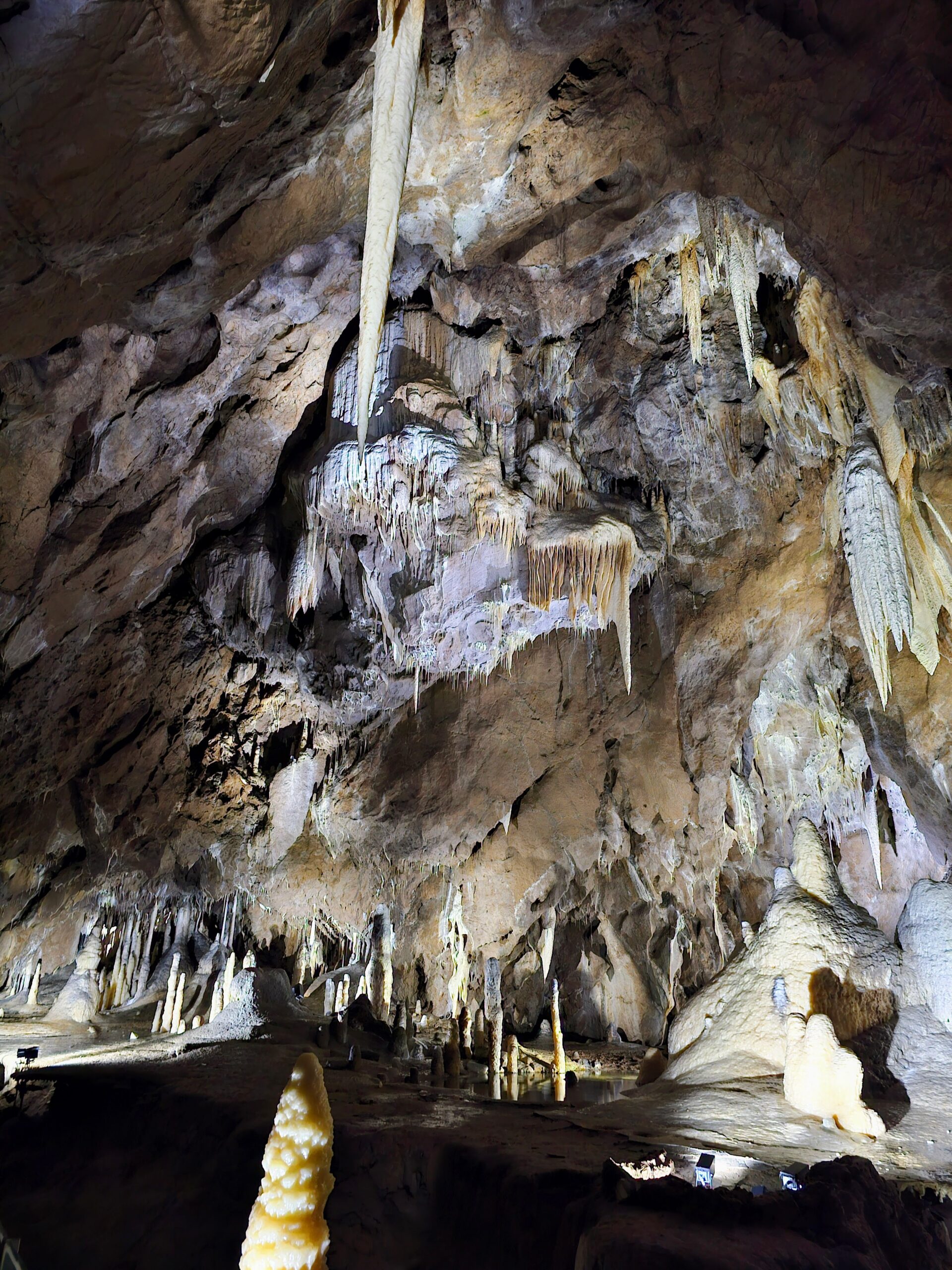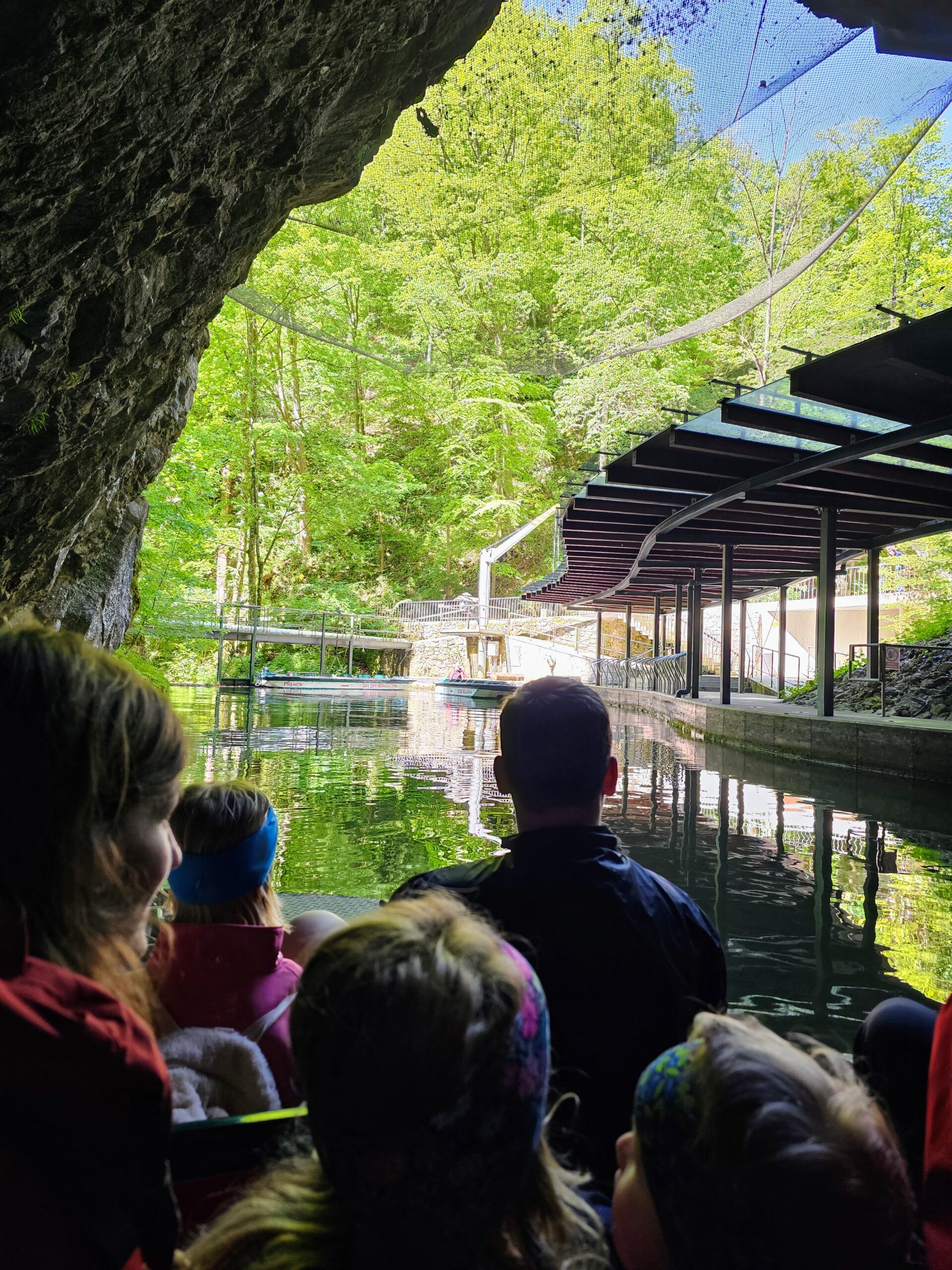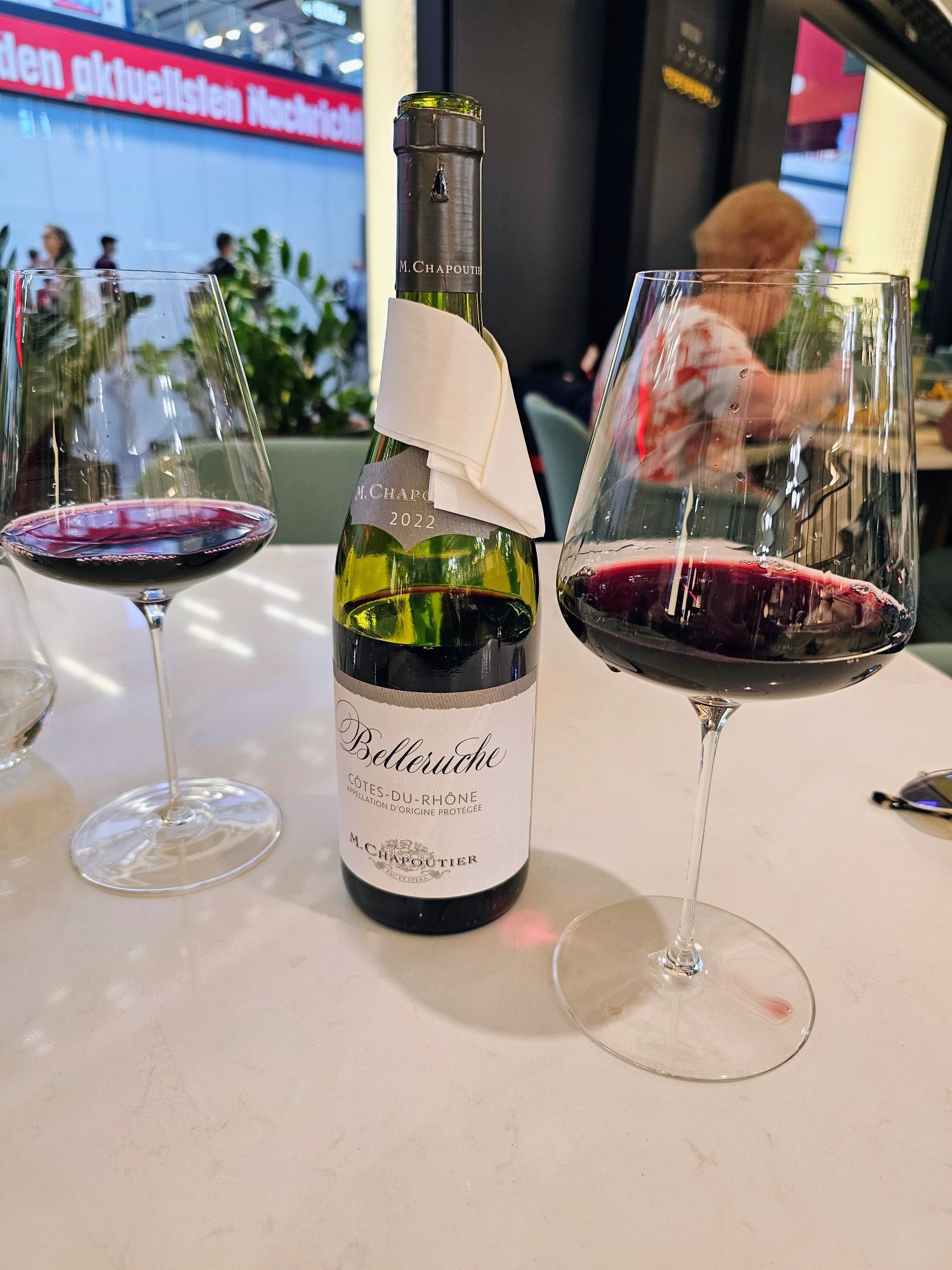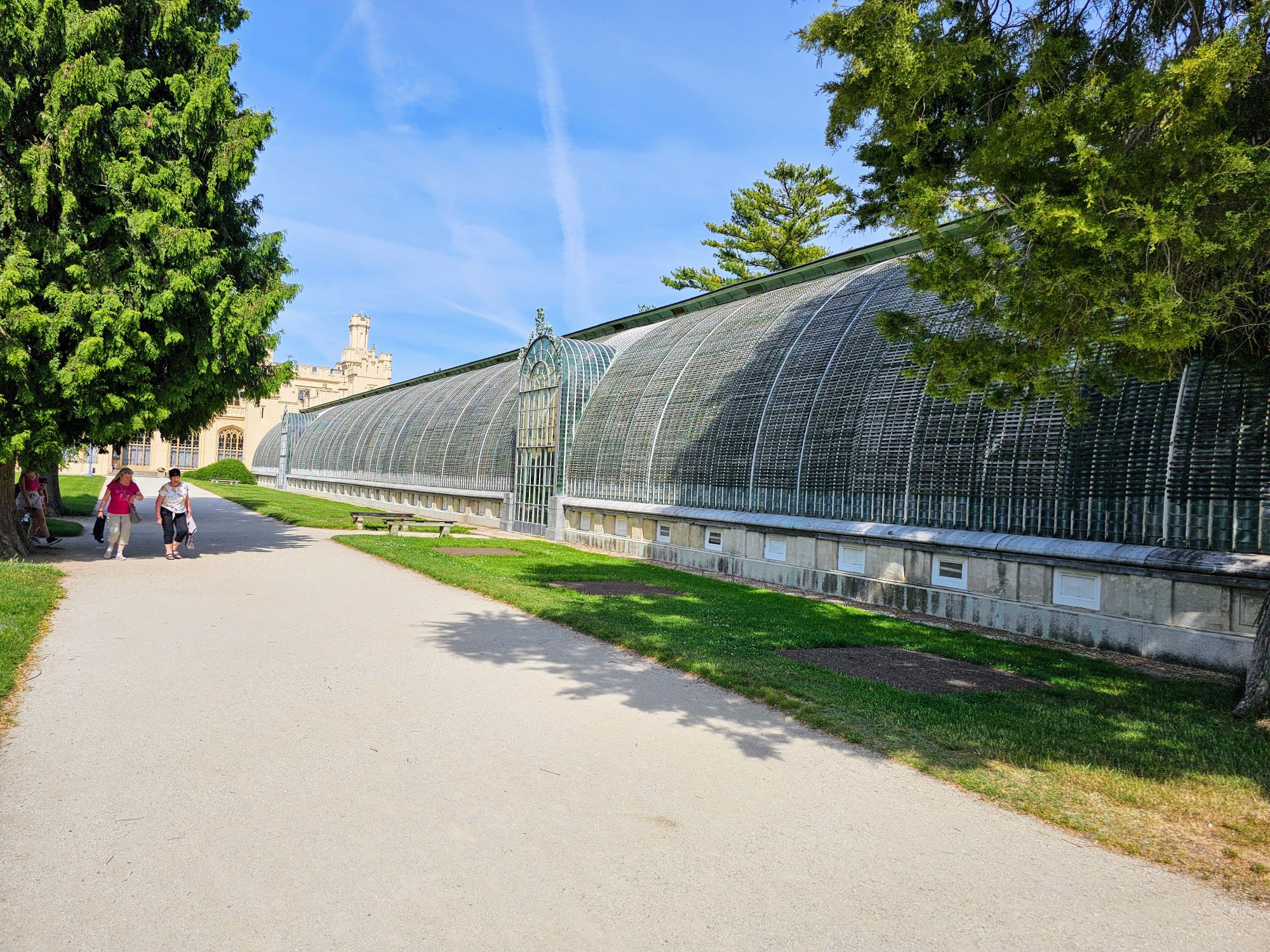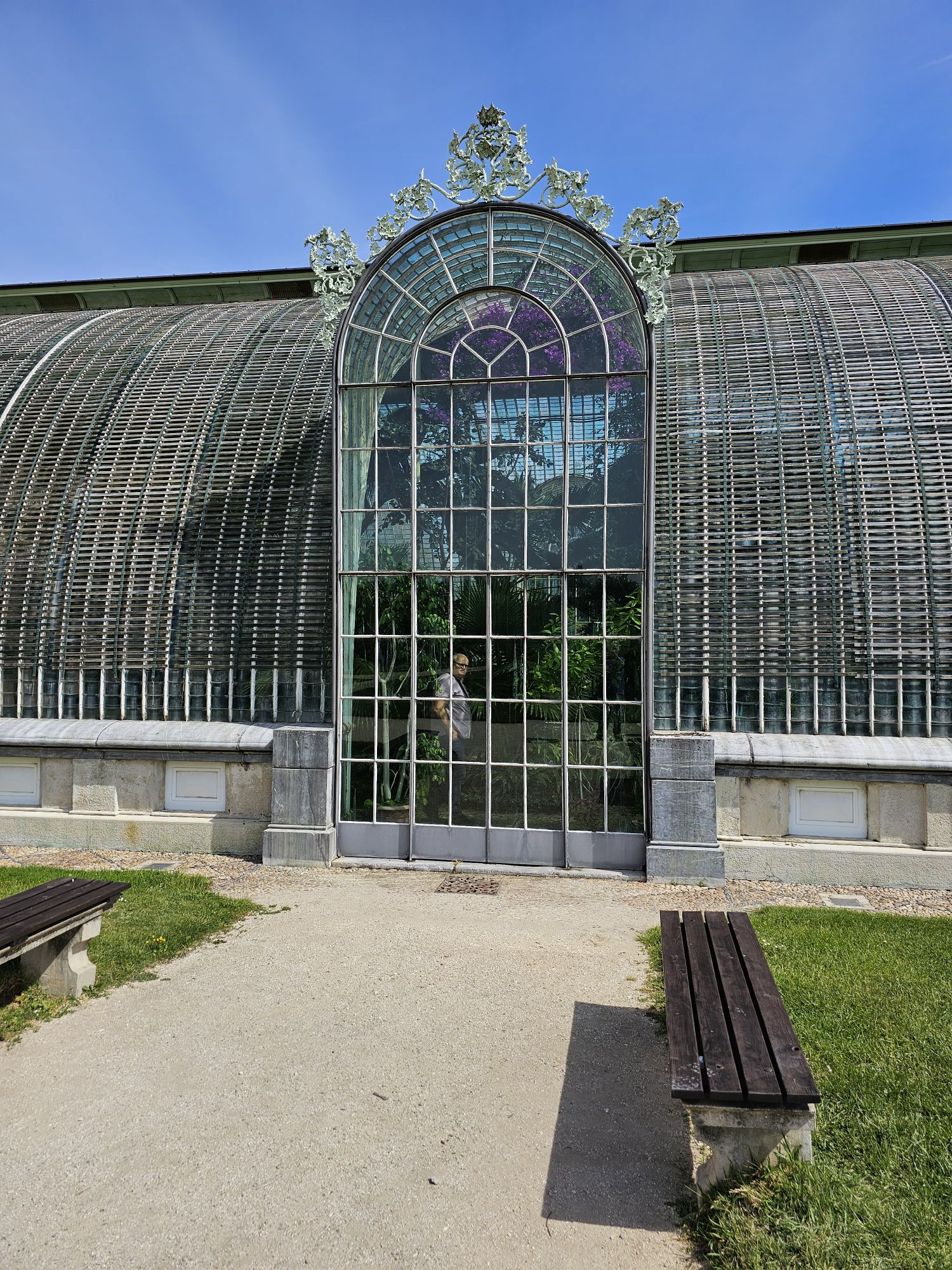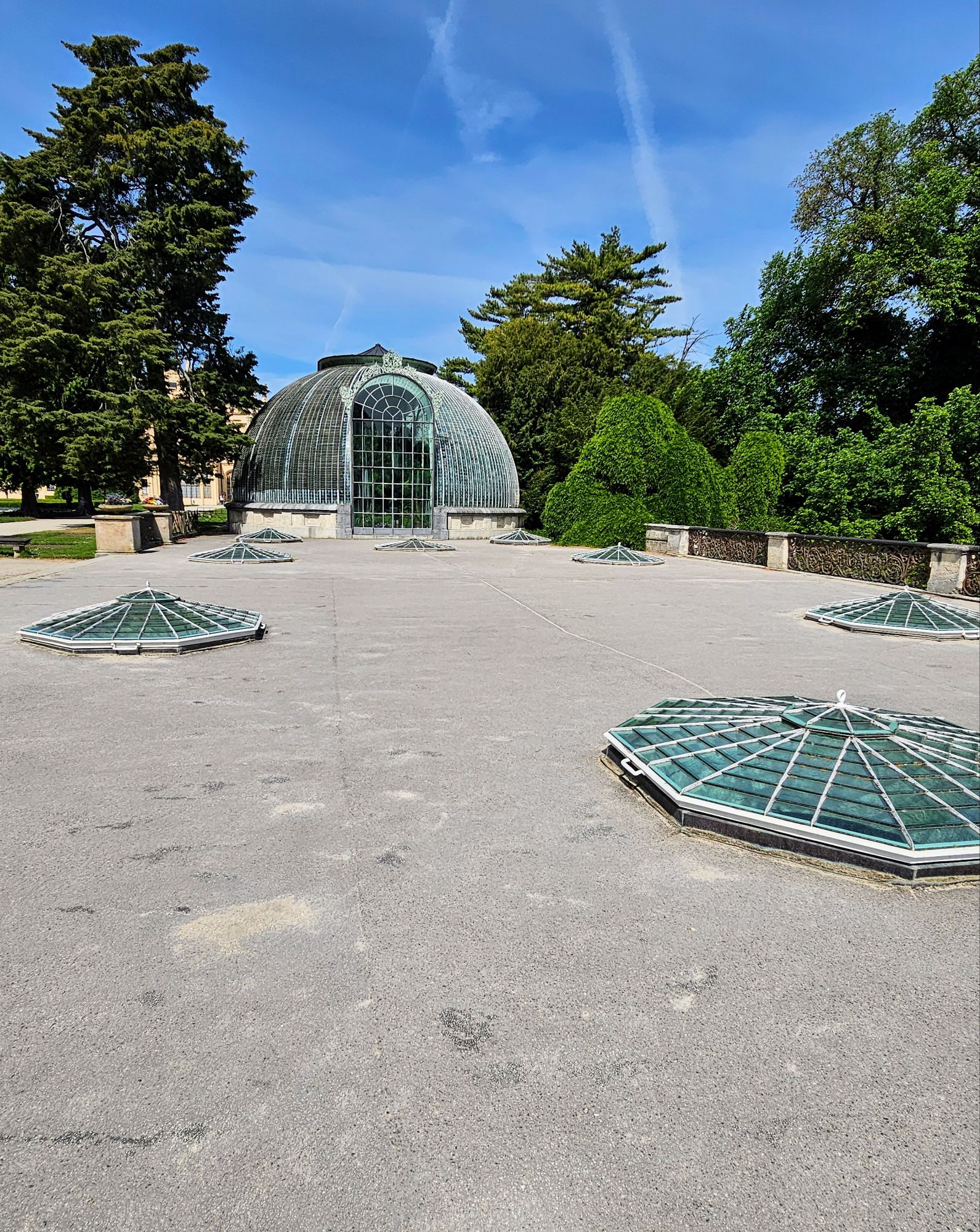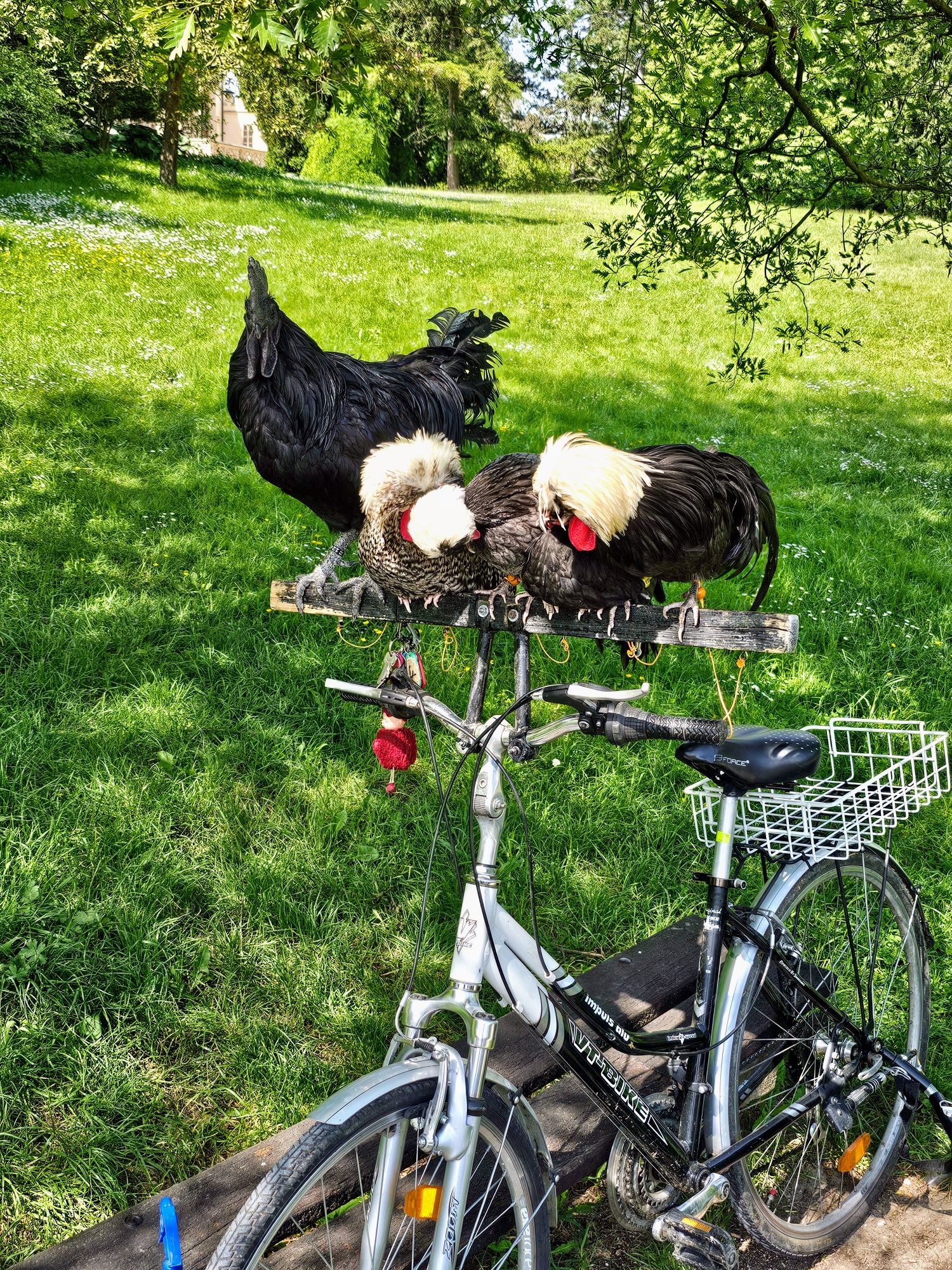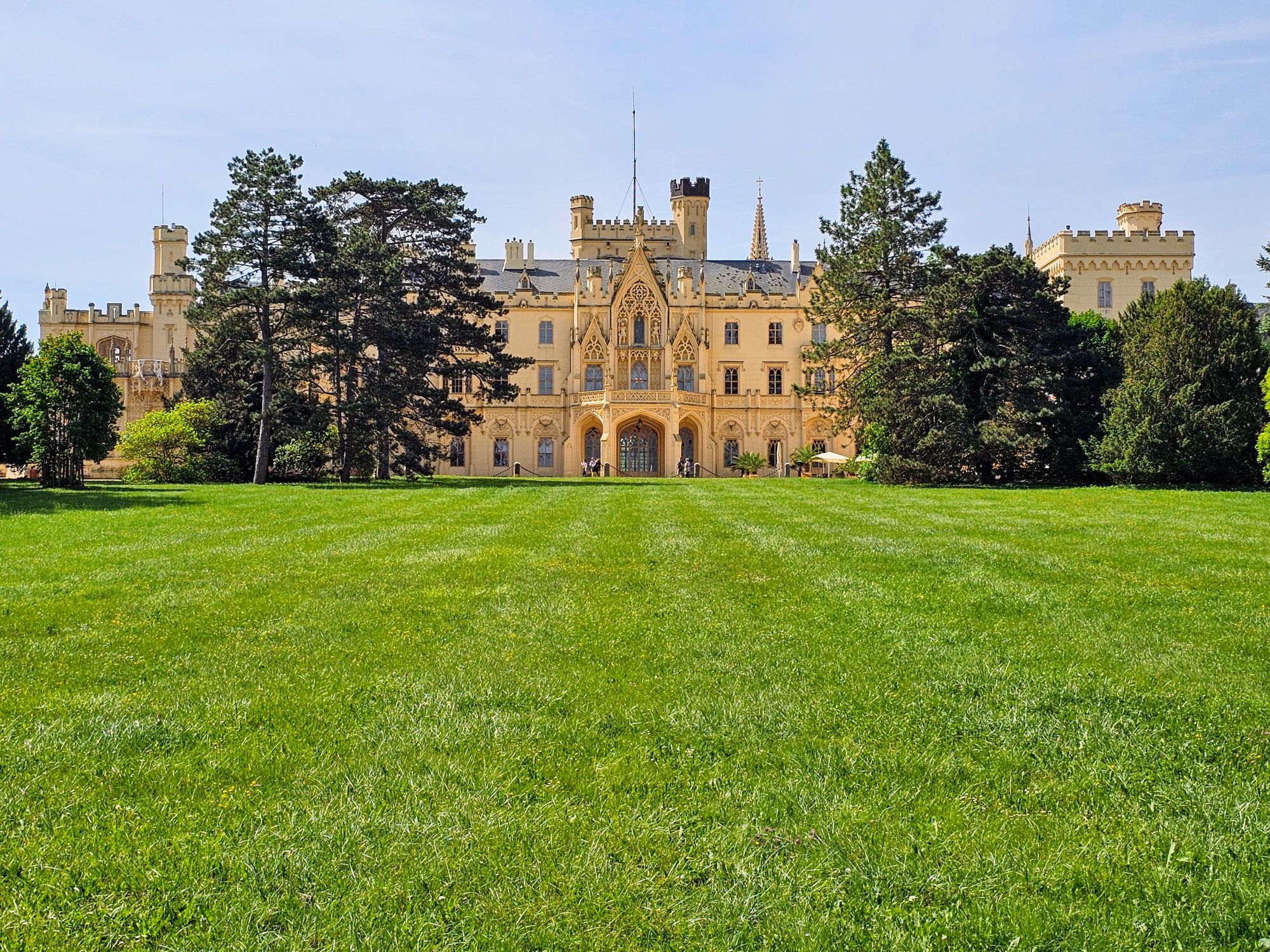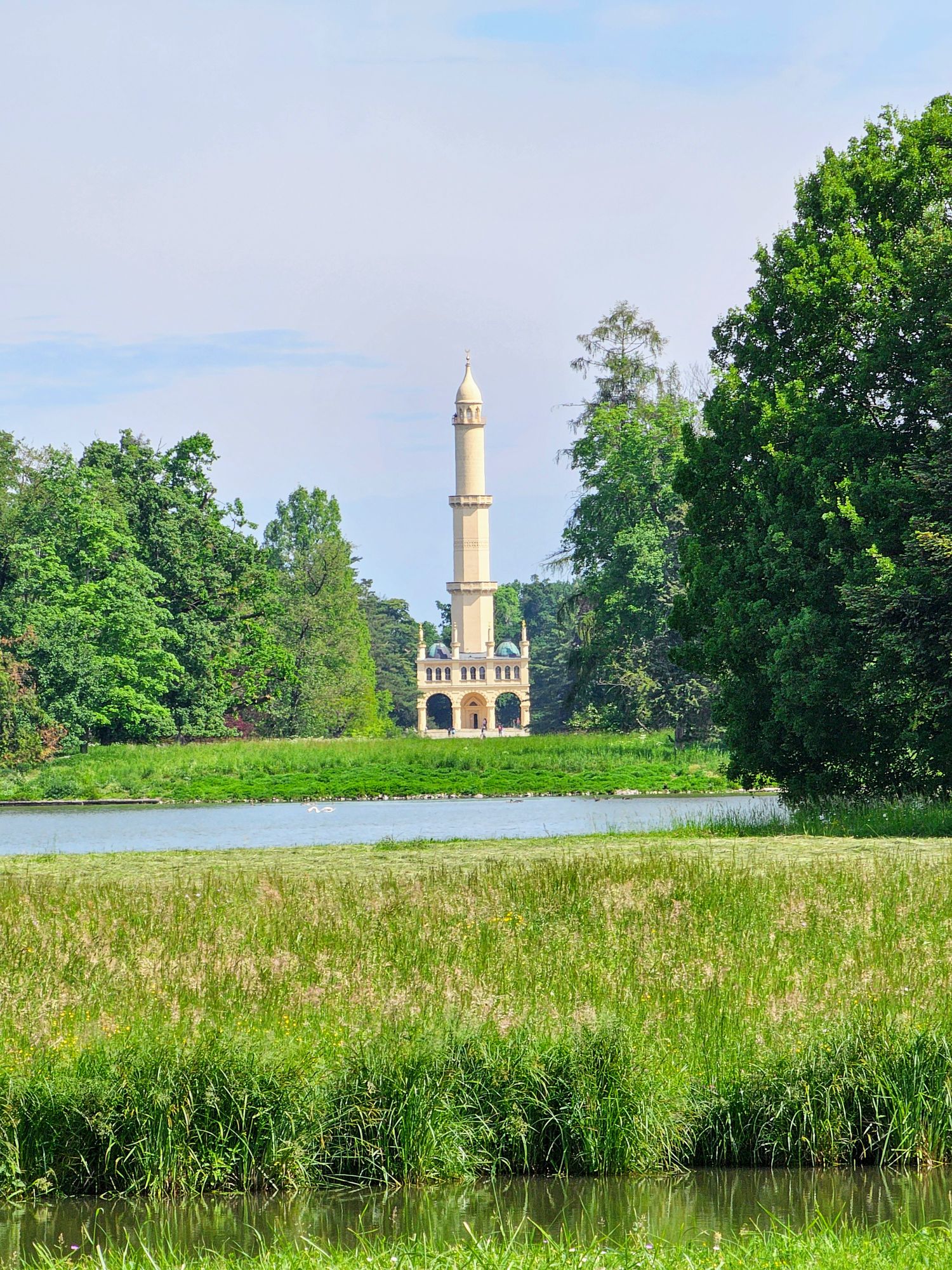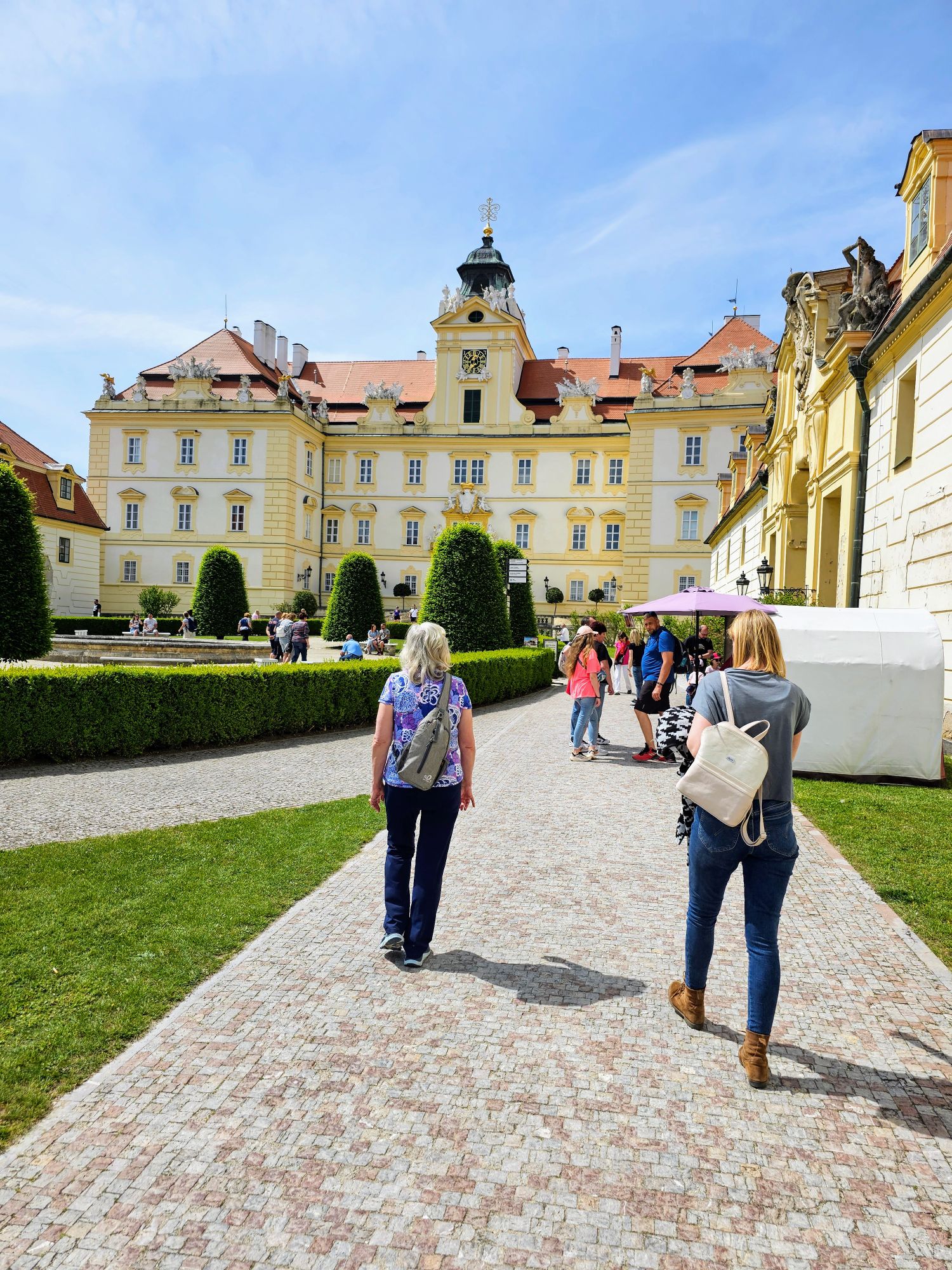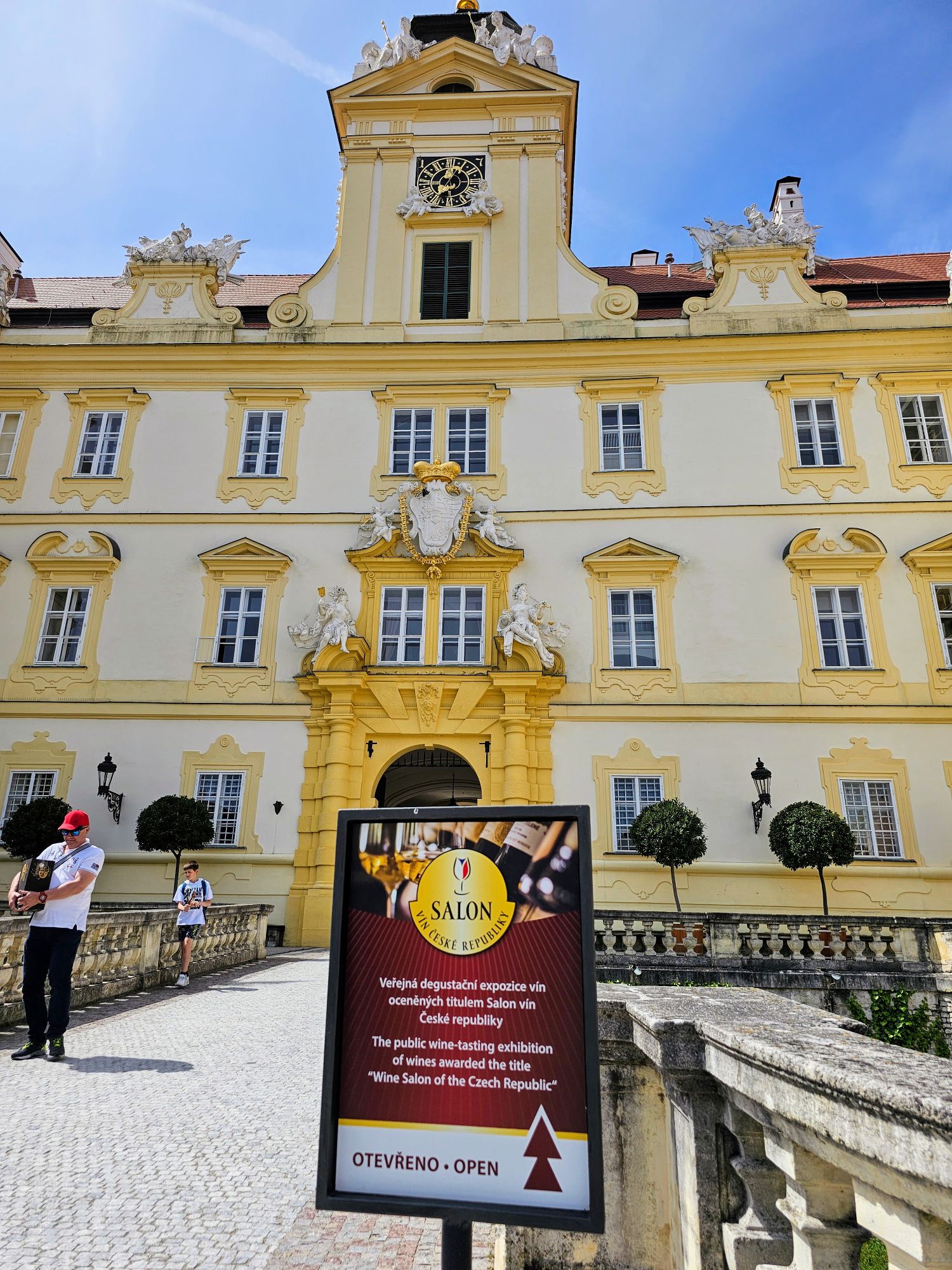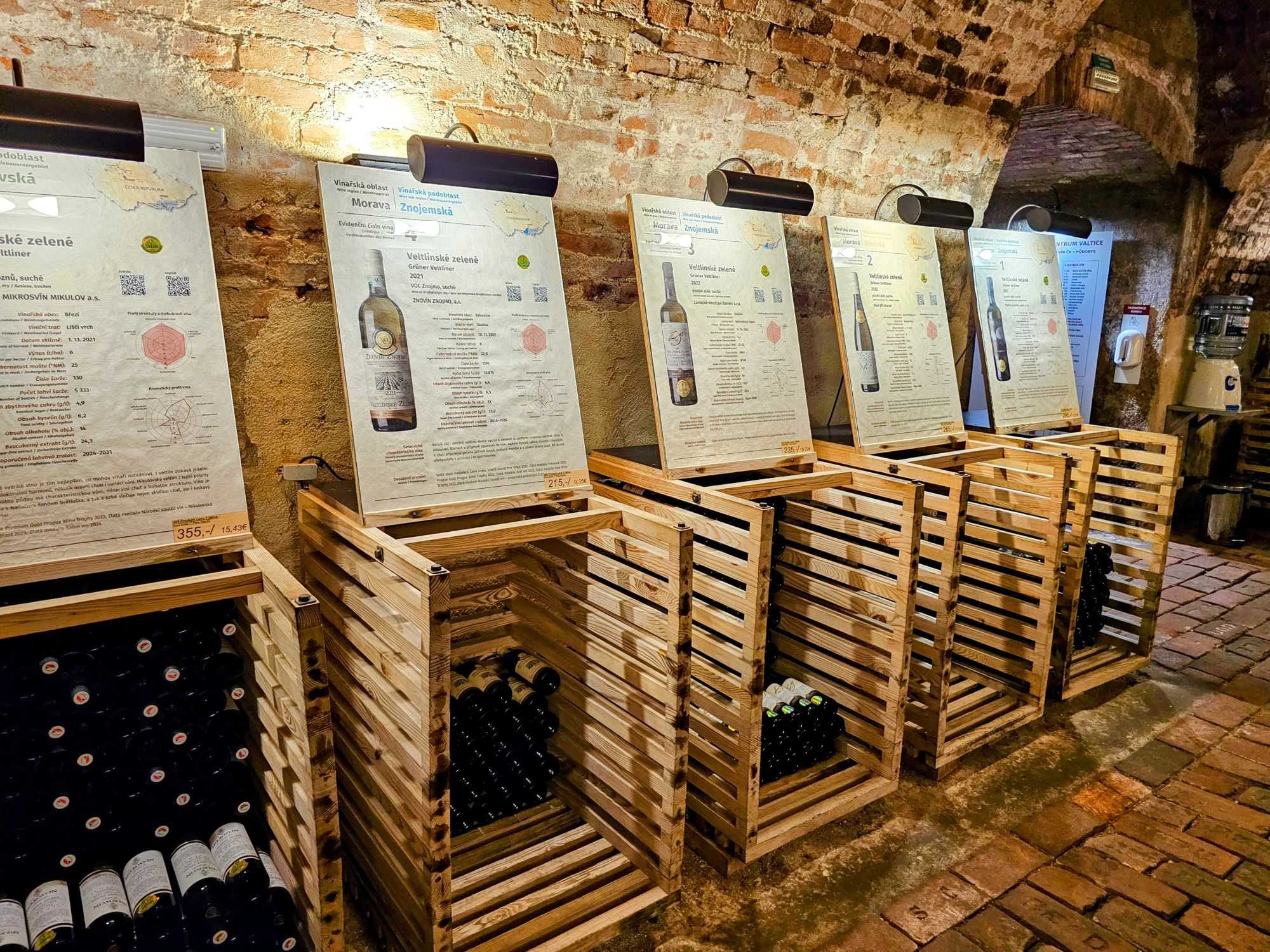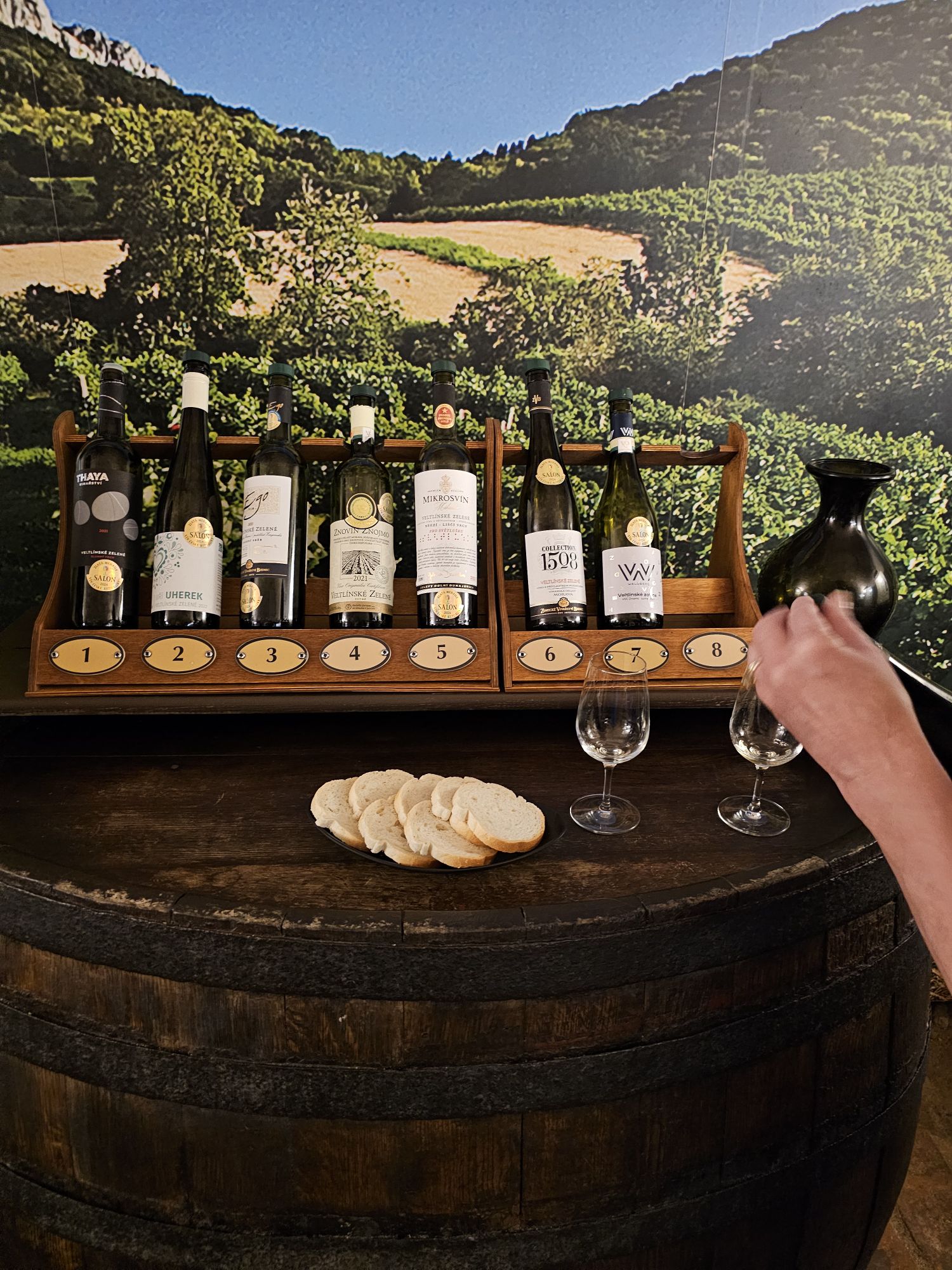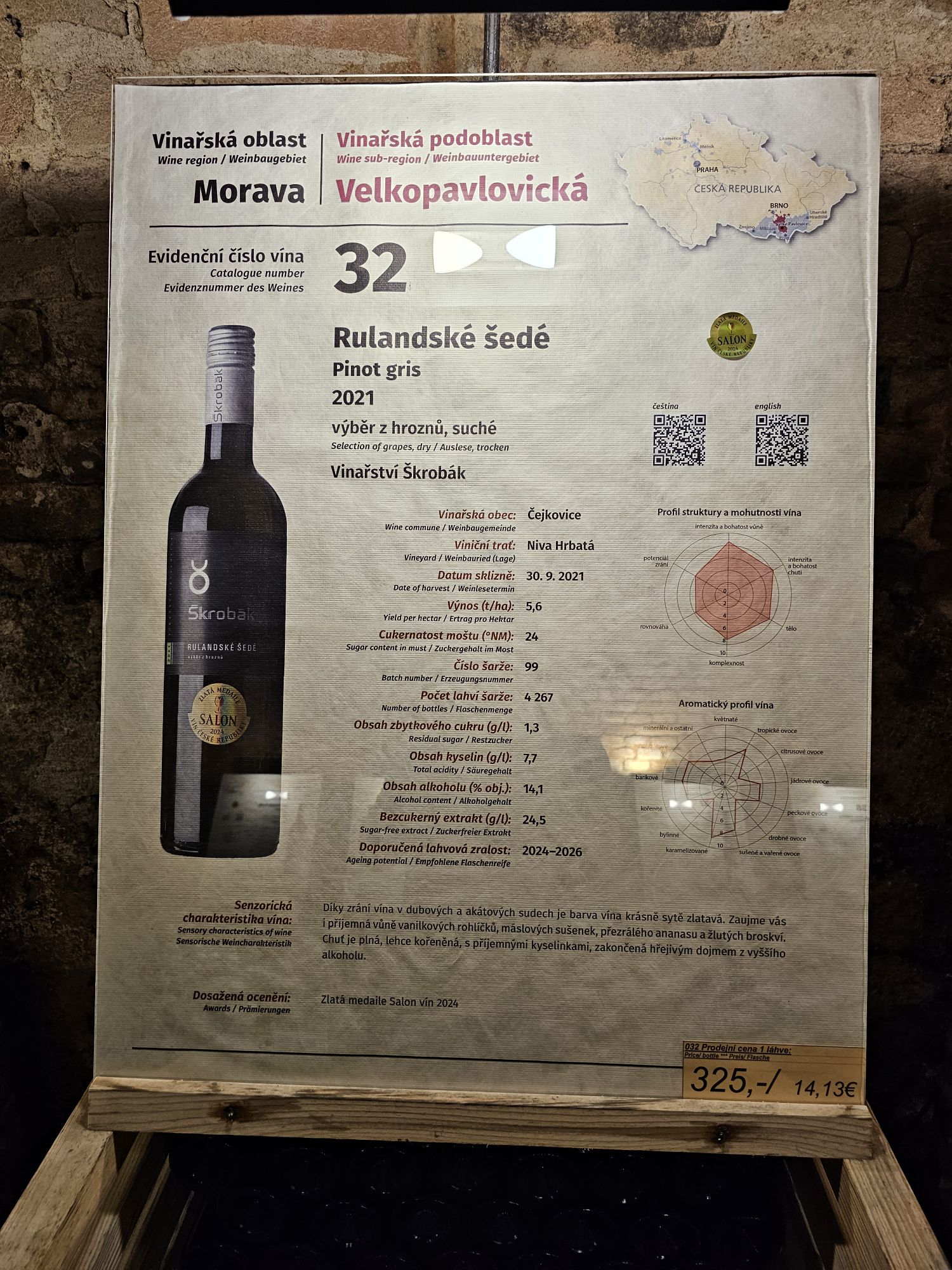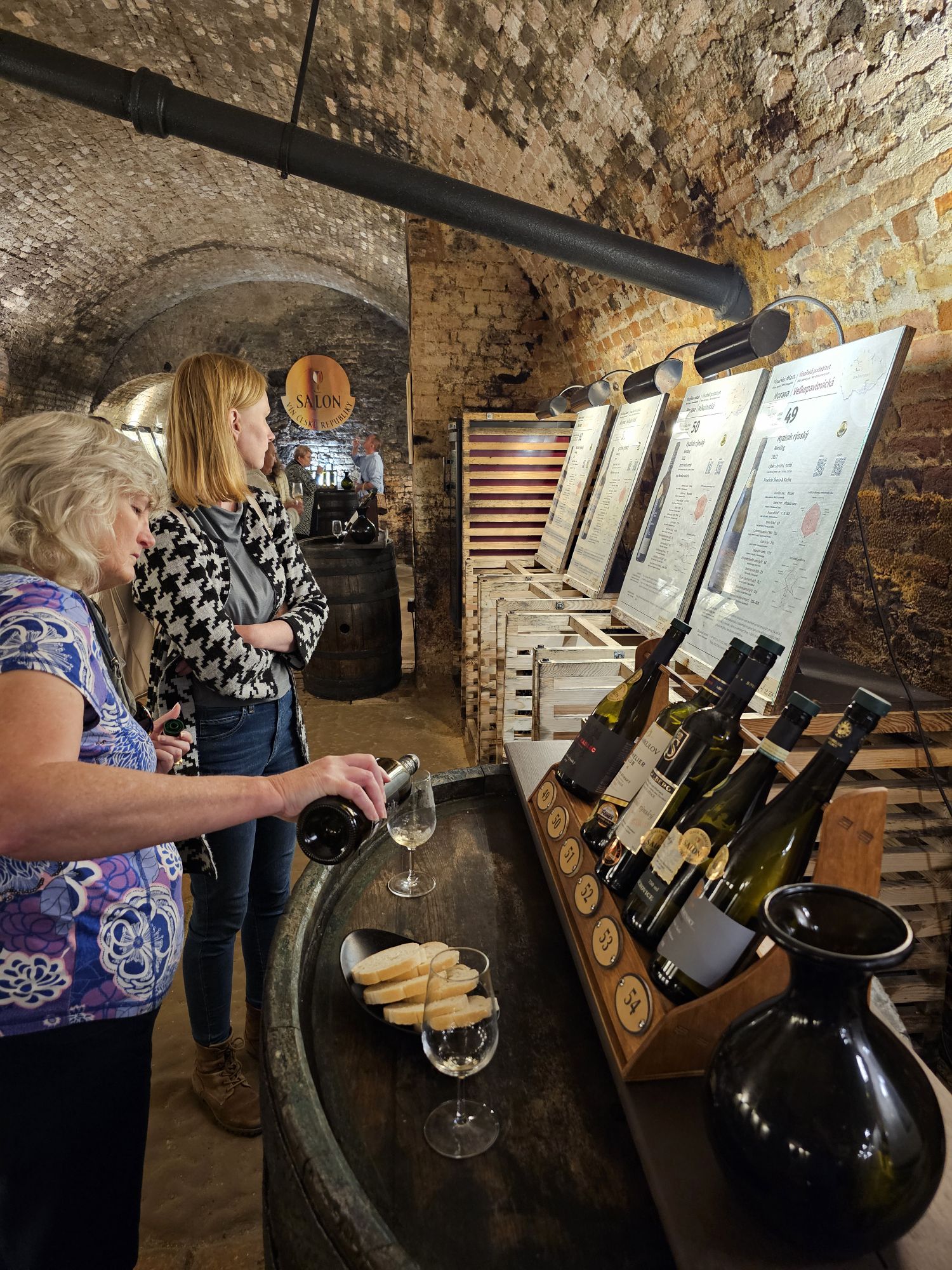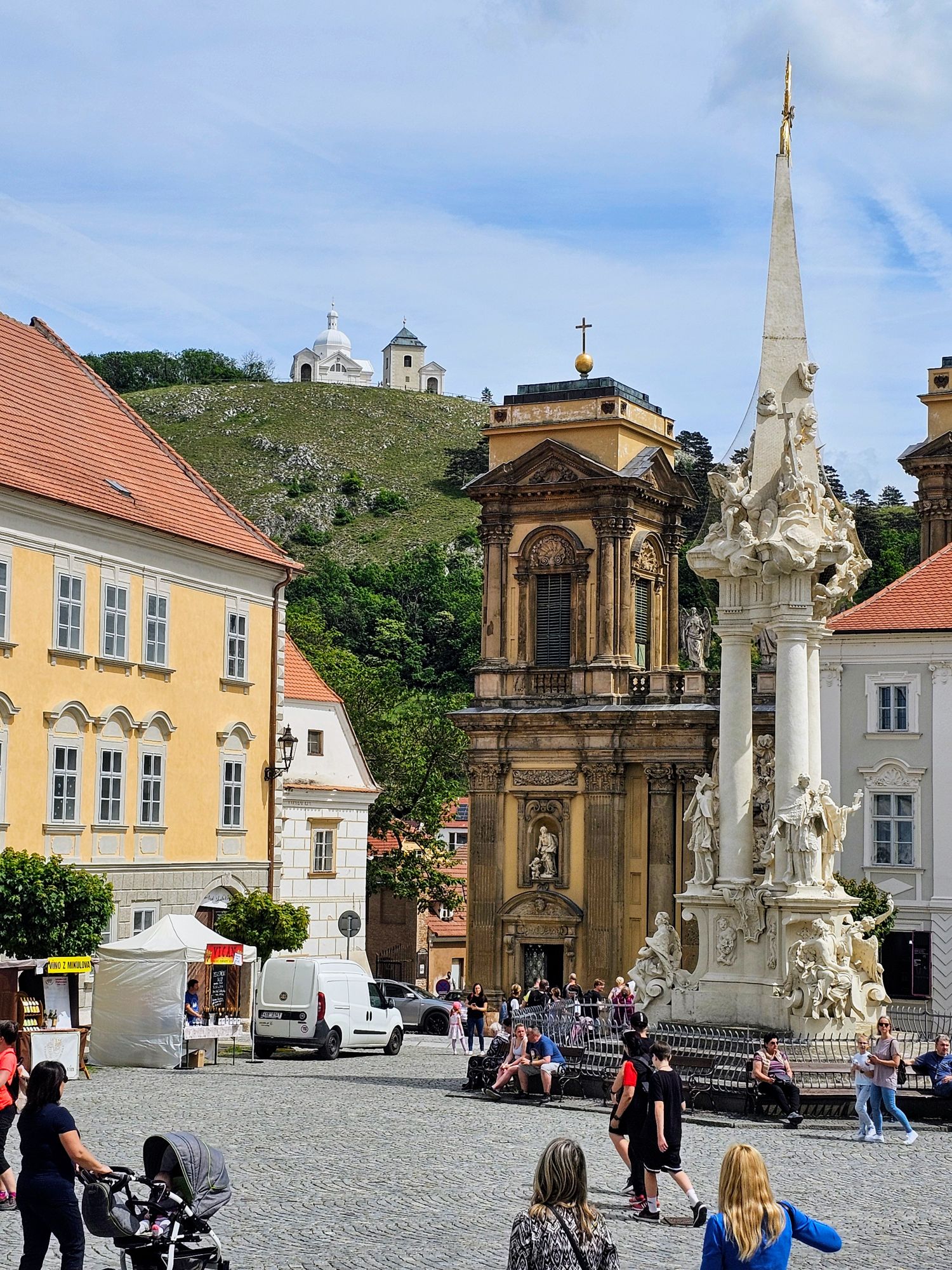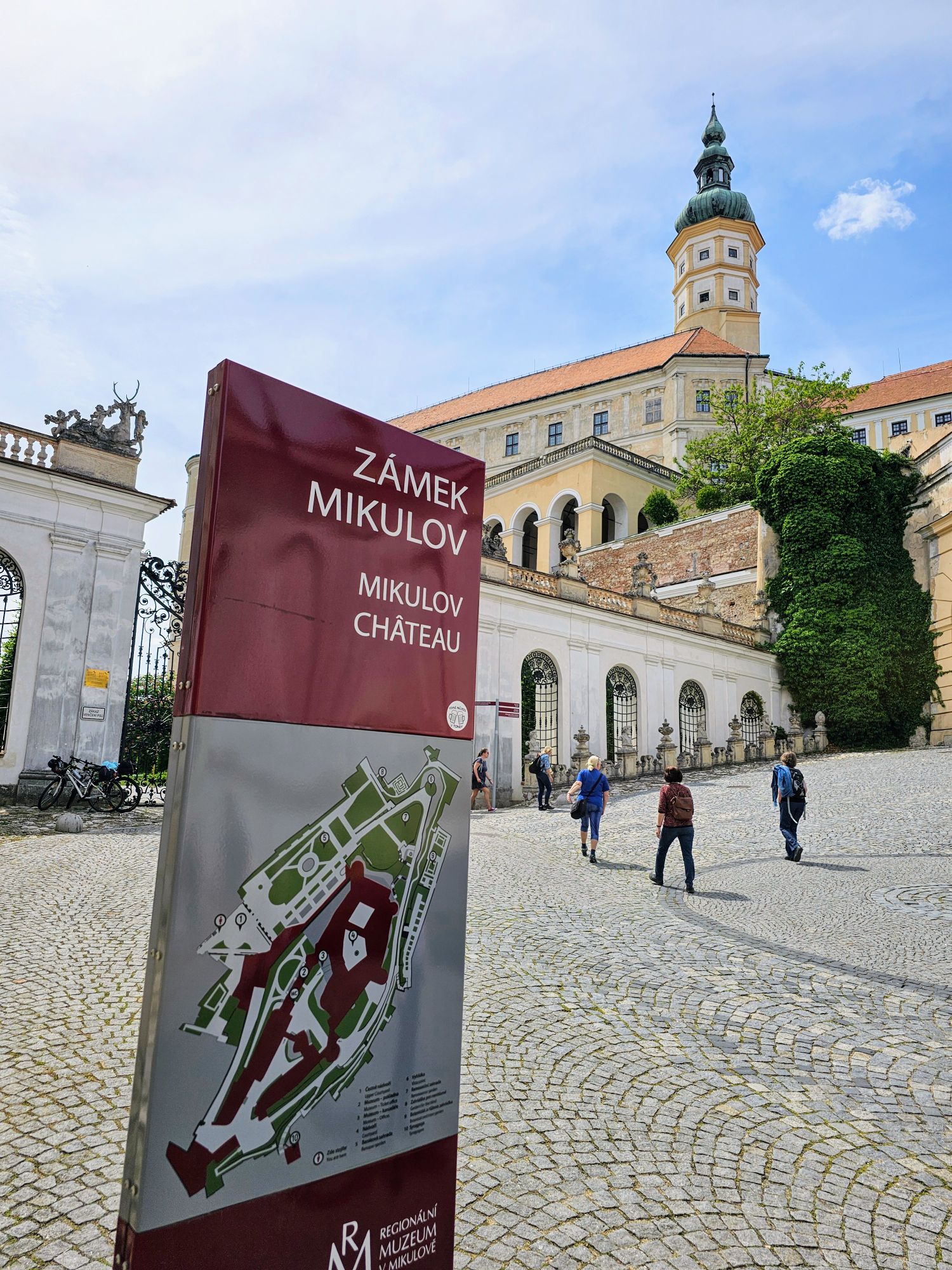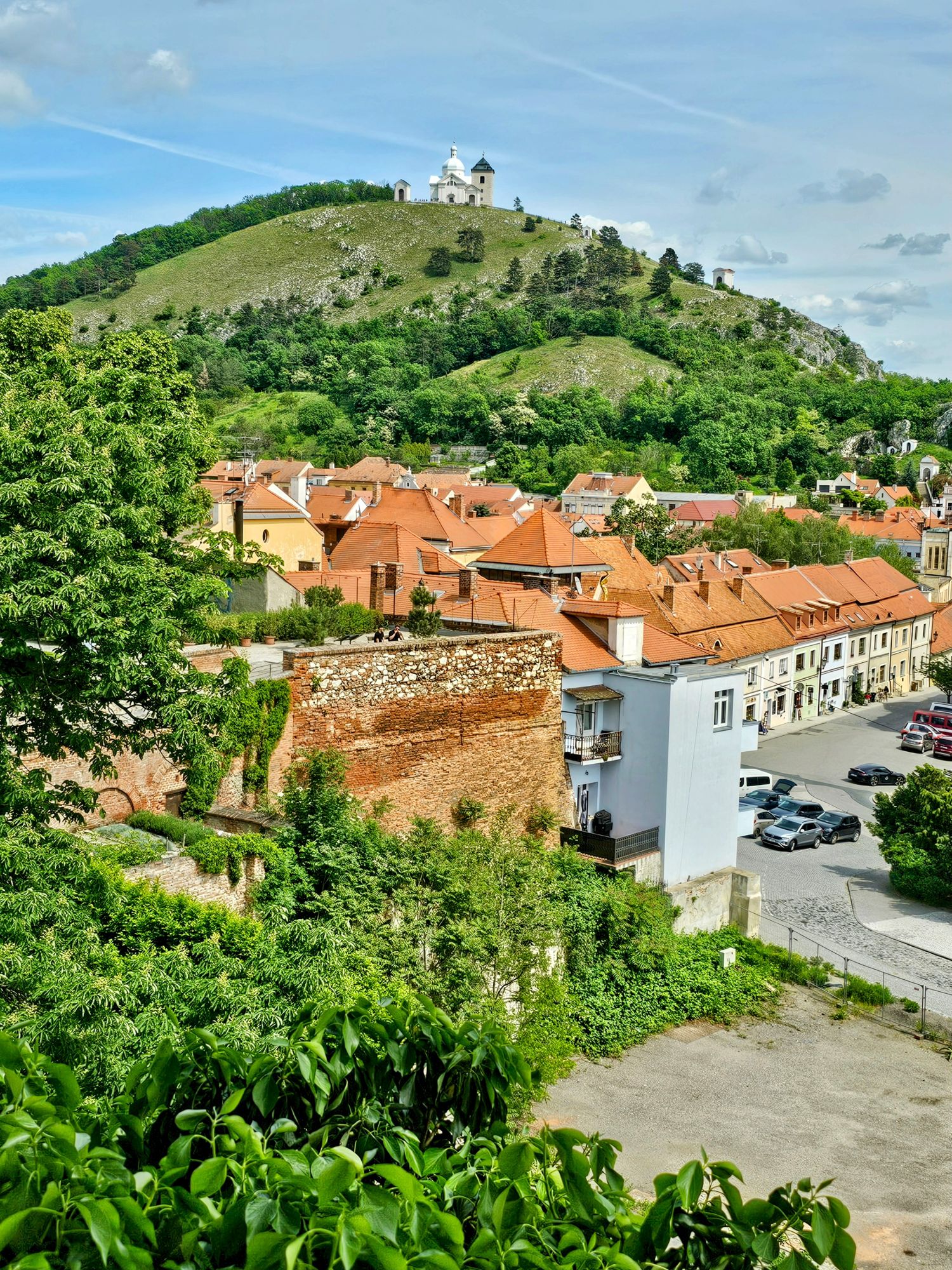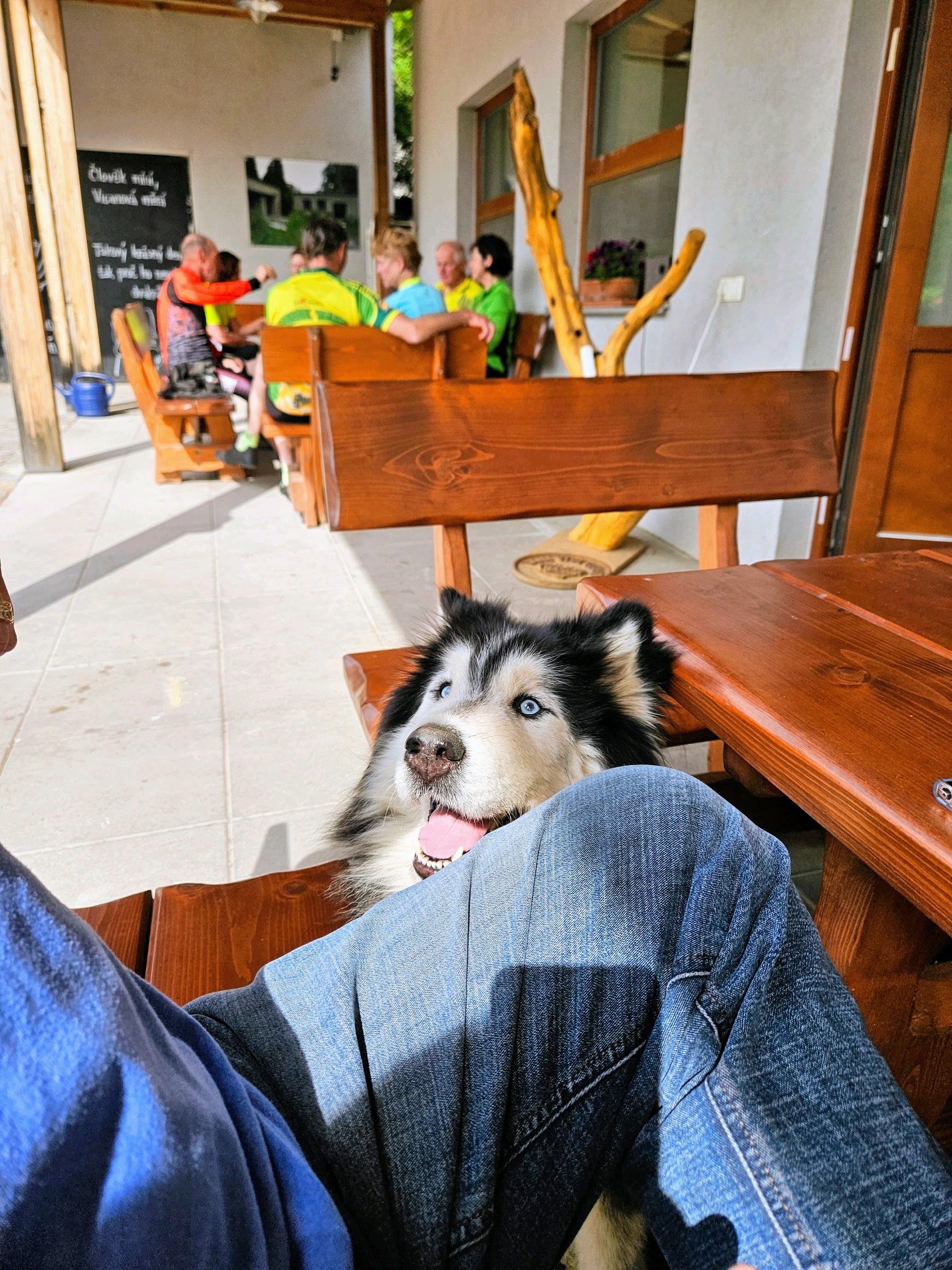On our final day of this trip we took another tour with Lenka from Brno Day Trips, this time to the Punkva Caves which lie just north of Brno. This region is known as the Moravian Karst, which is a vast area of limestone filled with underground streams, caves and gorges. and is considered the birthplace of modern spelunking. Of all the caves in this region, Punkva Caves is considered the most scenic, and gets the most attention. The sign at the entrance gives an overview of the cave system. Please note the large depression in the forest, as that will come up later in this post.
Upon entering the cave your first stop is called The Front Dome. This is the first section of cave that was discovered back in 1909. This part of the cave system extends 810 meters.
The second stop is Mirror Lake, and I really can’t put my finger on why they called it that? Those little glints in the water are from people throwing in money.
About halfway through this section you head up some stairs and they have markers on the cave wall depicting where the water level reached during historical flooding. By the way, it was good to have Lenka along to interpret for us, as the guide only spoke Czech.
Just past the markers is an area that is now dry, so there are no new cave formations being made. This one stalactite and stalagmite got so close!
Here is a closer view. The guides have named this pair Romeo and Juliet, as they will never find their way to each other.
Just past Romeo and Juliet, near the end of the first section of the caves, is The Curtain.
You then walk out of a doorway and into the Mococha Abyss, a gorgeous hole in the ground!
This depression was caused by a large cave collapse that happened thousands of years ago. I had to shoot a video of the area.
We then entered the second section of Punka Caves, where we boarded electric boats for a ride along the subterranean Punkva River. It was like something right out of the “Pirates of the Caribbean” ride.
Boat rides on this river opened to the public in 1933, so maybe Walt Disney actually visited?
This ride would never have passed muster in the United States. You literally had to duck and lean over to avoid the cave ceiling and walls as the boat made its way along the river. The river has sections that are 40 meters deep, so the bulk of this part of the cave system is underwater. This section of the Punkva Caves is 440 meters long.
The boat stops for a brief side journey on foot into another set of caves, known as Masaryk’s Dome. This section of the caves was discovered by accident when the military was trying to drill through the rocks to reach a different chamber. The lake in here is the one that should be called Mirror Lake!
Just past the lake is a beautiful cornucopia of cave formations! This was definitely the most impressive part of the Punkva Cave tour.
About 200 meters later, you are back into daylight. A very cool trip, and well worth the half day trip from Brno!
The next morning we took the train to Vienna, and stayed next to the airport since we had an early morning flight. We had planned to eat dinner in the hotel, but we had walked around the airport and there is a Wolfgang Puck restaurant in the airport. It’s also one of the highest rated restaurants in Vienna, so decided to eat there. Their wine list is impressive, and their stemware is even more impressive. A Chapoutier wine in an airport is a first for me!
That’s a wrap for this trip. Our next adventure is Norway and Denmark this August. Until then, as usual, if you made it this far, thanks for reading!
